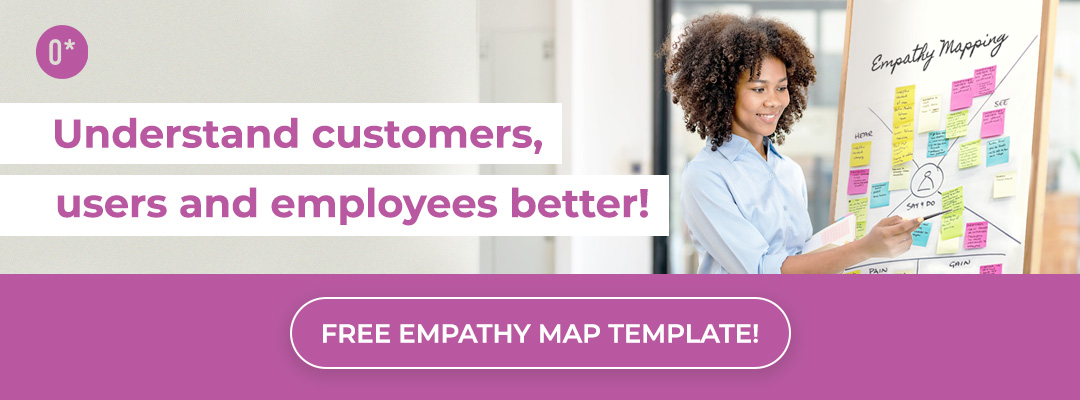
From plenty of experience, we know that a design research project is only as successful as the foundation it’s built upon! The Discovery phase is presented as phase one of the Human-Centered Design Process, but we’re here to tell you each and every project you embark upon has a unique set of goals and challenges that must be considered before diving into any discovery research!
We like to have a phase at the beginning of any project called Project Initiation. This phase is crucial for setting your project up for success! During initiation we utilize project management principles to determine or confirm the project scope, organize the project schedule, align stakeholders, identify a project governance structure, and much more.
To help set your next design research project up for success, we’re covering…
- Nine core project management principles
- Two key activities to conduct in the initiation phase
- Our favourite tools and tech for project management
Nine Core Project Management Principles
If you’re reading this blog, you might not hold the title of “Project Manager”, however, whether you’re an in-house designer or a consultant in this industry, it’s important to really understand the principles of project management. The ability to successfully set up a project and effectively communicate with everyone involved is a critical skill for any service designer or design researcher. Depending on who you work for and whether or not you have a project manager on your team, the project management principles utilized will differ. For example, if you’re working as a consultant, it’s more likely that you use all of the nine principles listed below. If you work for a government agency or tech company, you might not use every principle. Regardless, these 9 Project Management Principles are helpful to understand, and we bet they’ll come in handy over the course of your career!
“A successful project is one that aligns teams, outlines goals, has a plan, sets expectations and manages risk.”
1. Define clear project goals and objectives.
If you don’t have a clear picture of where you’re going, how will you get there? Setting the project goals at the beginning of the project is SO important. It’s a basic step, but sometimes it can be missed because of how basic it seems! You’ll want to make sure that your project goals align with the overall business or organizational objectives. To do this, you’ll need to make sure you have director or executive-level leadership in the room when goals are created or reviewed. Try to create goals as a team and clearly document and share them to make sure everyone is aligned.
2. Establish and maintain stakeholder alignment.
This is arguably the most important step of them all! Establishing alignment at the onset of any engagement is key to ensuring a project runs smoothly. If you have stakeholders with entirely different goals and expectations, then it can be hard to conduct the appropriate research and the insights you uncover might not satisfy anyone in the end. To avoid this, bring stakeholders together frequently to share ideas and review the project direction –make sure they are “on the same page” at the onset and throughout the entire project. Keep your group close-knit and always in the loop with project changes and updates. Plan to get sign-offs on major milestones and deliverables before moving forward to the next step. And again, you should communicate and document decisions every step of the way.
3. Define schedules, priorities, deliverables, and milestones.
You’ll begin with scoping your design research to determine how much research is needed depending on your goals. Once you’ve done that, you can map out the project schedule which should include major milestones and deliverables. The project schedule is something that should be approved by your stakeholders and shared amongst the team. Keep the project schedule up to date and be sure to communicate any delays or impacts to the timeline as they arise.
4. Conduct a risk assessment
Risk assessments help to identify any issues, hazards, or roadblocks that might get in the way of you and your team successfully conducting the work associated with your project. In this step, you’ll want to identify project risks (for example, a common risk we see is the potential to have project schedules pushed out if/when stakeholders don’t provide timely feedback on deliverables) and then determine mitigation strategies for each risk. Identifying risks early on will help to prevent them from happening and ensure there aren’t any surprises if something does happen. Share your risk mitigation plan with everyone on board and create accountability around who can best help mitigate each risk!
5. Communicate
Communicate regularly with your project team and stakeholders. Determine the cadence at which you’d like to meet, whether that be weekly or daily, as well as the methods of communication (via email, slack, zoom, etc.). You can also discuss cc etiquette –some organizations will prefer that everyone be cc’d while others like to keep communications leaner. Keep everyone well informed of project developments, and most importantly, be responsible and timely in your communication. This might be a hot take, but we believe that 24hr can be too long of an email response time! If something project-related needs your attention, do your best to communicate as quickly as possible so things don’t get held up.
6. Build trust
Human-Centered Design projects often require change, which can be scary! This is why building trust to ease fears is a key component of a successful project. You can build trust by always being transparent and honest with your project team. Seek to understand and build empathy for your stakeholders and all of the people who will have to change as a result of your findings.
7. Define team roles and responsibilities
Establish clear roles and responsibilities for both team members and stakeholders by asking questions like…
- Who is required for making approvals?
- Who is the project sponsor?
- Who is the main point of contact or project lead?
- Who should project escalations go to?
8. Establish accountability
Who is in charge of sign-offs on project goals, risk mitigation, approach, and scheduling? Determining this will create individual accountability, so each person will assume responsibility for the various tasks that make up your whole project. Accountability will be what pushes the project forward, avoiding big delays and bringing you closer to reaching your goal!
9. Monitor and measure progress
Our favourite ways to monitor and measure progress are through weekly team meetings, weekly status reports and check-ins with team members and stakeholders. Exercise regular budget and timeline checks, report on major blockers, conduct “post-mortems”, and improve workflows based on feedback and learnings!
Two Key Activities Conducted During Project Initiation
Now that we’ve nailed down the Project Management Principles, it’s time to get into the real initiation work! In a design research project, there are many different activities you would be doing to ensure a successful project launch, so here we are going into detail on two very important ones: Project Kick-Off Meetings and Discovery Workshops.
1. Schedule a project kick-off meeting
A project kickoff meeting is typically the first meeting that brings together the stakeholders and the entire project team to discuss project logistics. It’s an amazing opportunity for the team to get to know each other and answer any “unknowns.” If you’re delegated the task of running the kick-off meeting, you’ll create a “kick-off” slide deck to seamlessly guide your team. Even if you have to leave some slides empty, you can fill them in together during the meeting –it’s a great exercise that will take you a couple of hours to complete. Generally speaking, the kick-off meeting is a time for validation, so you should have a good sense of what the project plan is before the meeting, but you can leave some space for brainstorming on project goals.
What to Include in Your Kick-Off Deck/Presentation?
First things first, you’ll want to include a project overview. This will provide an outline and background information about the project, giving context for the meeting and helping to establish trust. Secondly, present a set of project goals and objectives as you understand them, and ask for feedback and validation from the group. You will have the opportunity to then refine these goals with stakeholders and the project team in real-time, and we find this promotes major clarity! This will lead into the portion of the meeting where you discuss team roles and responsibilities associated with achieving those goals. Introduce your project team and explain who is responsible for what, then introduce the stakeholders and allow them to explain their position and tasks. Make sure to touch upon who will review the research plan and deliverables, who will receive status reports, who will sign off on milestones, and any other responsibilities that need assigning.
Next, guide your group through a conversation on communication standards. This is your chance to determine the best cadence for meetings and reviews. Remember, human-centered design is a collaborative activity! Determine your team’s meeting schedule, whether that’s daily, weekly, or biweekly, and decide who will be attending each meeting. Our best tip? Don’t forget to decide on how you will communicate. Whether that be by email, Zoom meetings, or Slack messaging, establishing this will streamline productivity and effective communication. After communication standards are locked-in, it’s time to review the project schedule. Walkthrough the pre-established project schedule and double-check the dates of key milestones and deliverables. Things are sure to move around, so make notes and refine the schedule based on stakeholder feedback. Finally, review action items and to-dos as a group. Capture a list of action items during the meeting and establish dates for when those action items must be accomplished. Layout the next steps, and finally, conclude your meeting!
Post-kick-off…
After the kick-off meeting, you’ll need to update the kick-off deck with any feedback received, changes made, or action items declared. Make dates and deadlines crystal clear so everyone is aware of the plan, and send this revised deck out to the entire team within 1-2 days of the kick-off meeting, reminding each person of their action items.
Aligning Stakeholders With a Discovery Workshop
The next initiation phase activity you would conduct to ensure a successful research project is a discovery workshop. This time, you’ll focus directly on your stakeholders and bringing them into alignment (in turn, helping to align the project team as well!) This is your chance to establish an open and collaborative working relationship between stakeholders and your project team.
In a discovery workshop, you will rapidly gather and document information about users and organizational goals to inform your research, as well as capture what is already known regarding the current user journeys and workflows within the organization, too! Another good activity is to break down the different user groups, and begin to develop empathy for users.
We have some quick tips for your next discovery workshop! Jot these down and bring them out when it comes time to plan the day. Include 8-12 people between the stakeholders and the project team and run the workshop for a half-day or full day. This should be plenty of time if you come well prepared (which we know you will!) Maintain the intention of this collaborative workshop – this is not a meeting or presentation, rather, it’s a time for co-creation and building understanding.
Some sample exercises we’ve found great success with are…
-
Journey Mapping and/or Process Mapping
-
Prioritization of challenges (dot voting)
-
Empathy Mapping (understanding user needs)
So, what will you get out of this discovery workshop? Your outcomes will be organized in a summary report including findings from the DW, research goals and questions, an updated project schedule (if needed), a summary of the user groups, pain points, and high-level overviews of various journeys. Consolidate your workshop findings in a clear and concise way and use them as a reference point to go back to.
Our Favourite Tools for Project Management
There are endless SaaS (software-as-a-service) applications out there and it can be difficult to know which one to choose. To help keep you organized and feeling on track every step of the way, we recommend enlisting the help of project management tools. Here are the ones that have our stamp of approval:
-
Asana – To support every management style. With so much control over how you visualize and organize your project, everyone on your team will find value in this tool!
-
AirTable – For spreadsheet lovers. If your team members are used to working with Microsoft Excel or Google Sheets, there will be very little adjustment required to use AirTable.
-
Trello – List makers, look no further. Project organization is made easy through the use of boards! Picture a whiteboard full of easy-to-organize sticky notes.
-
Monday.com – The “Swiss Army Knife” of management software. Perfect for seamlessly running any type of workflow.
-
ClickUp – Google-based workflow management software that allows you to connect Google Docs, Sheets, Slides, and Forms to tasks across departments.
We hope this post taught you something about how setting clear goals, communicating effectively, building trust, and aligning teams make for a successful project. Even if project management isn’t your primary discipline, being able to hone in on these skills will prove useful in your design research or service design career. Project initiation is hard work! But we know how helpful key activities like project kick-off meetings and discovery workshops are for aligning teams and stakeholders. Best of luck in your next project – you’ve got this!
Resources we like…
Project Management Isn’t Just for Project Managers: 4 Skills You Need to Know
What Are Project Objectives + Examples And How To Write Them




